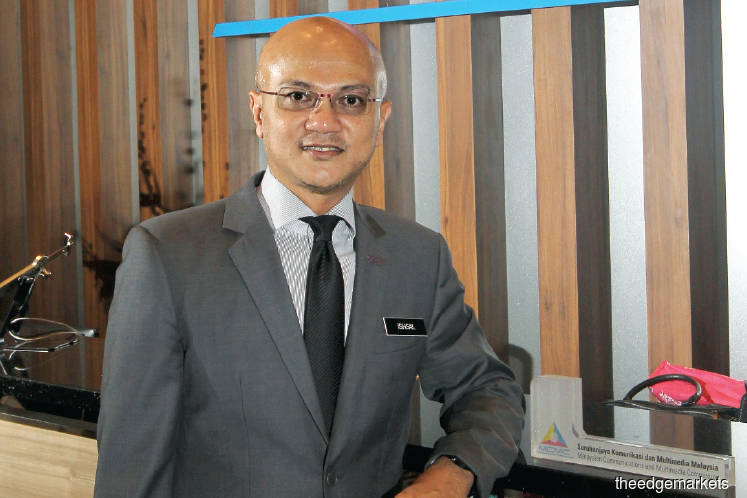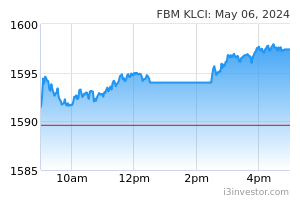Special Report: All eyes on potential winners in 5G race

IN the coming weeks and months, those watching the telecommunications sector will be keeping their eyes and ears open for tie-ups among the operators to create a single consortium (of multiple licensees) to win the coveted 5G spectrum in Malaysia by September.
Call it the fear of missing out. Despite the lack of a commercial case for a nationwide fifth generation (5G) consumer network, details and tender documents for the upcoming 5G beauty contest, slated for release by end-February, will be sought after and pored over — to support the national development agenda for digital transformation, if nothing else.
Eyes are naturally turned to incumbent fixed broadband provider Telekom Malaysia Bhd, which has the country’s largest built-up of fibre network, the essential backhaul infrastructure supporting the heavy data needs for 5G as well as the existing 3G and 4G networks.
“We certainly aspire to lead the consortium backed by the communications backbone of Malaysia established by TM, with the widest connectivity and convergence networks of copper, fibre and wireless nationwide; and connected seamlessly with our digital infrastructure,” a TM spokesman tells The Edge.
“TM has always played its role as the national infrastructure provider … We have a long and proven track record in nation-building as well as the right expertise and experience needed to transform Malaysia into a digital nation. TM has been at the frontier of each telecommunication technology evolution in Malaysia throughout the years. And now, TM is 5G ready and all set to deliver solutions that make 5G possible for home, business and beyond; and serve as the catalyst for Malaysia to transition to the Fourth Industrial Revolution (IR4.0), and enable a world, where not only people are connected, but all things are connected,” the spokesman says.
Incumbent rising
In 2008, TM was selected as the government’s partner to roll out fibre-optic infrastructure under the national High Speed Broadband (HSBB) initiative to deliver up to 100Mbps broadband to residential customers and 1Gbps for businesses in high economic impact areas. The government invested RM2.4 billion and TM RM8.9 billion to reach 1.3 million premises by 2012 under Phase 1.
In February 2015, HSBB Phase 2 saw TM investing RM1.3 billion and the government RM500 million to roll out the so-called last mile access to another 390,000 premises, including state capitals and towns, deemed as priority economic areas, by 2017. TM was also selected for the Sub Urban Broadband (SUBB) project to reach another 420,000 premises by 2019, with a RM1 billion investment and the government co-investing RM600 million.
TM has over 540,000km of fibre-optic cables, according to its 2018 annual report. That is easily 10 times more than the rest of the local players combined, observers say.
Even though it was not singled out for HSBB and SUBB, TM is expected to play a key role in the National Connectivity and Fiberisation Plan (NFCP), which is estimated to cost RM21.6 billion until 2023. Half of this will be funded by the government through the Universal Service Provision (USP) fund, towards getting 30Mbps broadband speeds in 98% of populated areas by 2023. All licensees contribute 6% of weighted net revenue from designated services to the USP fund annually, the biggest contributors, naturally, being the largest listed telecoms operators here. (See
Infographic on Page 55)
“We have established the communications backbone of Malaysia … we will continue to serve as a strategic enabler of the NFCP, backed by our solid infrastructure, towards empowering Digital Malaysia,” the TM spokesman says.
Infrastructure for 5G could cost another RM7 billion to RM8 billion over the medium term, in addition to investments in 4G and LTE. Only 40% of the country’s base stations have been fiberised, one area the chairman of the Malaysian Communications and Multimedia Commission (MCMC), Al-Ishsal Ishak, says needs vast improvement quickly.
Every 10% increase in fixed broadband penetration could raise gross domestic product growth by 1.38% in developing economies, the World Bank estimates. For Malaysia, that 1.38% works out to RM19.3 billion, based on 2018 figures. Citing figures from the Malaysian Institute of Economic Research (MIER), the MCMC says 5G could add up to RM12.7 billion to the country’s GDP between 2021 and 2025, and create more than 39,000 higher-income jobs.
The high capital expenditure needs for upgrades nationwide makes infrastructure sharing the obvious solution, says Al-Ishsal, explaining the rationale behind the decision for a single 5G consortium.
“Operators should be competing on service quality [instead of depending on differential in network quality] to win customers,” he tells The Edge, indicating MCMC’s preference for solutions that cut infrastructure duplication that saves the industry money and reduces outflow.
He stops short, though, of saying whether the MCMC is indeed looking to nudge the industry towards the model Singapore adopted in 2008 when it deployed its Next Generation National Broadband Network. NGNBN separates retail service providers and active infrastructure operating companies (OpCo) from fibre network wholesalers, or Network Company (NetCo), as well as the owner of the underlying passive infrastructure assets (AssetCo).
TM, whose stock tumbled to an all-time low last year following confusion over the Mandatory Standard on Access Pricing (MSAP), could well be sitting pretty for the upcoming beauty contest.
“On top of our extensive experience in building the national network infrastructure, we are also well-versed with the proposed NetCo (wholesale) model and are well-equipped with vast resources to serve as an InfraCo. We seek to not only enable the ecosystem but also plan to be a neutral partner for industry players and collaboration partners towards enabling Malaysia’s Digital Economy,” the TM spokesman says.
Investors and analysts concerned over rollout costs, or any player being caught wrong-footed, may well draw comfort from the fact that Al-Ishsal is keeping tabs on how the telecommunications companies are performing on the local stock exchange. He wants the industry to continue doing well to support the national agenda.
“The total market capitalisation of Malaysia’s five largest listed telecommunications companies was up about 12.3%, or RM14.7 billion, between end-October and mid-December last year,” Al-Ishsal says, telling The Edge how the MCMC makes it a point to engage various stakeholders, including analysts and fund managers, to get buy-in for the national agenda.
“It is not too late to start [cutting duplication at 5G],” he says.
Tighter ties
It remains to be seen if the advent of 5G will again nudge the players to marry. Malaysia’s telecommunications scene has been ripe for consolidation for years. Yet the proposed mega merger that would have brought Celcom and Digi — two of the Big 3 mobile operators — under one roof fell through last year despite parents Axiata Group Bhd and Telenor Asia lauding the merits while skirting specifics on why the marriage was called off.
What is certain, though, is that all players have to assess how and which of their rivals they must collaborate with to secure a winning formula. CEOs of the “Big Three” mobile operators are all for collaboration and say they will work closely with the MCMC, even as they seek greater clarity on the terms for the upcoming spectrum allocation.
“We have always viewed partnerships as a positive way forward in delivering efficient and widespread access to Malaysians, as seen in our various collaborations across towers, fibre, undersea cables, WiFi hotspots and more,” says Digi CEO Albern Murty. “Particularly on the approach to 5G, we are of the view that it will help deploy 5G in a more concerted manner across industry,” he added in an email reply.
As Malaysia’s leading converged solutions company, Maxis CEO Gokhan Ogut says the company has “significant value and expertise to contribute towards the advancement of the government’s NFCP ambitions and targets, and the subsequent benefits to everyone in Malaysia”.
“We continue to support the nation’s 5G agenda and are committed to accelerating 5G in Malaysia … We will find the best way to collaborate while maintaining effective competition in consumer-based services and enterprise solutions. Meanwhile, there are many areas that will help accelerate the benefits of connectivity. Ultimately, the end goal should be about delivering more value to customers and ensuring the robustness of the country’s network infrastructure, and we look forward to playing our part in achieving this goal,” Ogut says.
“In terms of 4G, we will continue investing in our network to maintain our 4G leadership and provide the best mobile experience for our customers. This remains a key priority for us, alongside our push to deliver the best 5G innovation to benefit individuals, homes and businesses in Malaysia,” Ogut adds. He notes that these investments in converged solutions have a direct correlation to innovation, unmatched personalised experience and customer service, which differentiates Maxis in the market.
While describing network differentiation as “very important”, Idham Nawawi, CEO of Celcom Axiata Bhd, says Celcom also has “a very strong brand, competitive product and services, efficient customer support, over-the-top content platforms, partnerships with various players across industries and many more, [which] allows us to be competitive and deliver exceptional quality of services beyond the network”.
“Celcom recognises the strategic importance of 5G for the country and looks forward to working closely with MCMC and collaborating with various ecosystem partners, creating a ‘win-win-win’ scenario in realising these objectives. Celcom has always believed that collaboration is the way forward for the industry to explore a coordinated and efficient 5G deployment, and the 5G consortium is an option that we are open to. MCMC’s approach to award spectrum by way of a beauty contest is welcomed, as opposed to an auction process that could have made the spectrum overly expensive. This will quickly reduce digital gaps and meet NFCP objectives for the benefit of the rakyat,” he adds.
( 24,36 % )
( 39,38 % )
( 36,26 % )


